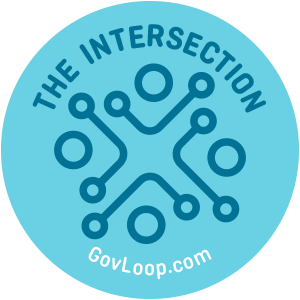 This Q&A is part of a new GovLoop series called “CIO Conversations.” Through 2019 we’ll feature conversational interviews twice a month with current and former federal, state and local chief information officers to get know the people behind the titles. You’ll learn about the perks and challenges of their job, how they ended up in their current position, what’s top of mind for them, how they’ve rebounded from setbacks and more.
This Q&A is part of a new GovLoop series called “CIO Conversations.” Through 2019 we’ll feature conversational interviews twice a month with current and former federal, state and local chief information officers to get know the people behind the titles. You’ll learn about the perks and challenges of their job, how they ended up in their current position, what’s top of mind for them, how they’ve rebounded from setbacks and more.
The National Archives and Records Administration (NARA) is home to all of the United States’ most valuable documents. Whether you’d like to research your family tree or view the Constitution, NARA’s team has compiled resources to streamline the process.
NARA Chief Information Officer (CIO) Swarnali Haldar described the agency’s mission in three words: collaborate, innovate and learn. As national record keeper, the agency works toward this every day, and its IT department is no exception. Haldar spoke with GovLoop to share how she and her team work toward this mission, what it takes to lead as CIO and the agency’s current modernization priorities.
The interview below has been lightly edited for brevity and clarity.
GOVLOOP: You’ve held other CIO positions, including Deputy CIO of NARA and CIO of the Foreign Agricultural Service within the Agriculture Department. What skills from those positions did you bring to your role as the CIO of NARA?
HALDAR: I hope what I bring from those roles is how to bring together people and processes to deliver results. As a leader, I make it my goal to clearly articulate the results that we need to achieve while understanding the resources, assets and restraints that we may have, to be able to define a given roadmap. Clear communication helps set expectations and when the appropriate expectations are set, results are always received with appreciation even if it may not be the exact solution that an organization set out to achieve.
Looking back on your time as CIO, which is one of the longest tenures among current federal CIOs, what advice would you give to people about longevity in the role and how to push for innovation in the public sector?
Celebrate the wins and learn to breathe and look to tomorrow on a given bad day. As CIOs, we juggle many levels of successes and issues daily. While the non-successful projects may not get us the notoriety we want, it’s important that I and my leadership team help our staff learn from them so that, at the least, we don’t make the same mistakes again.
As far as being innovative in the public sector, we must learn to hear the actual challenges faced by our customers and learn to sort through every shiny technology and be selective in the technology that may truly be relevant in bringing value to the challenges faced. We are handed a shrinking budget and must trust that a pilot that we may choose with a new technology will allow us to actually realize benefits from the customer perspective.
What are your top priorities for NARA?
As NARA states in its Strategic Plan that by December 31, 2022, NARA will, to the fullest extent possible, no longer accept transfers of permanent or temporary records in analog formats and will accept records only in electronic format and with appropriate metadata. We need to work with agencies and the private sector to build capacity for mass digitization of analog records and transition storage of temporary analog records. As such over the next several years, our key strategic priority is modernizing our next-generation Electronic Records Archives. It is the key strategic initiative, without which we would not be able to handle the influx of electronic and scanned paper records after 2022.

National Archives and Records Administration CIO Swarnali Haldar
What’s the motivation behind this initiative? How is OMB’s new guidance affecting that plan?
The current administration has challenged federal agencies to transform the way they do business. The motivation dovetails with NARA’s Strategic Plan that government shouldn’t be wasting taxpayer money on supporting paper processes that are outdated and don’t provide necessary services in an efficient, cost-effective manner. Therefore, all agencies should be conducting all business electronically and managing the associated records electronically.
The latest Memorandum M-19-21, Transition to Electronic Records, supports NARA’s Strategic Plan and goes further in establishing new goals and guidance, as well as consolidates some previous guidance on managing records. The new policy goes further and instructs federal agencies to manage all their records, permanent and temporary, in electronic format.
And what are some of your top challenges?
We are facing fiscal challenges like all other federal agencies’ planning for targeted budget reductions in our discretionary expenditures, competing with a very active private and nonprofit sector for the best talent in information management, technology, engineering, social media and other cutting-edge vocations. And dealing with our own currently aging and near-retirement-age workforce.
Do you have any advice for agencies facing similar challenges? Or motivating a team in the face of these challenges?
We try and meet our staff where they are. We have college career and job fairs and try our best to hire interns and college students. Competing with the private sector means stressing that public service is a public trust. Providing competitive salaries, retirement, health care and other benefits that often exceed many private [companies] provides a stability and consistency that many workers may not find elsewhere.
For our experienced staff, our mission has been our promise to the American people – that we will preserve the historically valuable records of all three branches of our government, and that concepts such as transparency, openness and accountability are not punchlines, but rather are at the heart of why we can retain an experienced and committed workforce.
When strategic and other positions come open, we try to recruit using social media and tout our commitment to family-friendly workplace programs and opportunities to join our many employee affinity groups.
Are there any specific tools, methods or advice that you would recommend to other public sector teams to improve their interagency communication?
Important to me are open, collaborative communication practices and structures, such as recurring meetings with managers and supervisors, and all-hands or town hall-style meetings with all staff. We use these to communicate major developments, annual goals and other critical reminders. We are believers in formal and informal tracking mechanisms for major development efforts, tactical plans and projects.
Very important to me is constant learning. If that means my direct reports and staff need to take some new training or refresher training on soft skills and human resources policies and procedures, then we make those investments a priority for our staff.
You’ve cited your college internship with the government as a starting point of your career. How is NARA, specifically your team, working to engage those entering the workforce? Any tips for engaging new, talented employees?
As for engaging new, talented employees – or our current talented employees – I think it comes down to being included and heard. Individuals are drawn to NARA’s mission, but what they learn when they arrive is that their ideas are valued and can make a difference – no matter where you fall in the organization. Every day we learn from each other, collaborating on innovative, cutting-edge technology that helps NARA perform its mission. It’s an exciting agency to work for, where everyone’s role contributes to our success.
In public sector IT, the number of women in leadership positions is surprisingly low. How can agencies create a more inclusive IT environment to improve recruitment and retention of women?
By setting a good example from the very top and being very clear that NARA’s vision for equal employment opportunity for all our staff is to foster a work environment that is free from discrimination and promotes equal, fair and inclusive employment opportunities for the best talent available – regardless of their differences. To the extent that federal agencies commit themselves to an inclusive work environment, they should be able to recruit, attract and retain capable women leaders. In our office, I lead by example. I ensure the work is interesting and creative, collaborative with our customers and colleagues, and all staff have the opportunity to contribute ideas, take ownership of projects that use their many talents, and include these ideas in our planning for projects and priorities.





Leave a Reply
You must be logged in to post a comment.